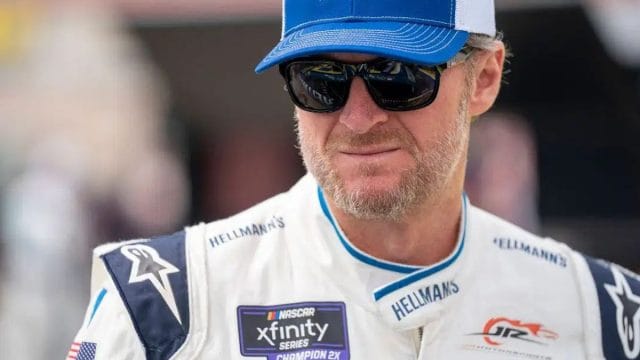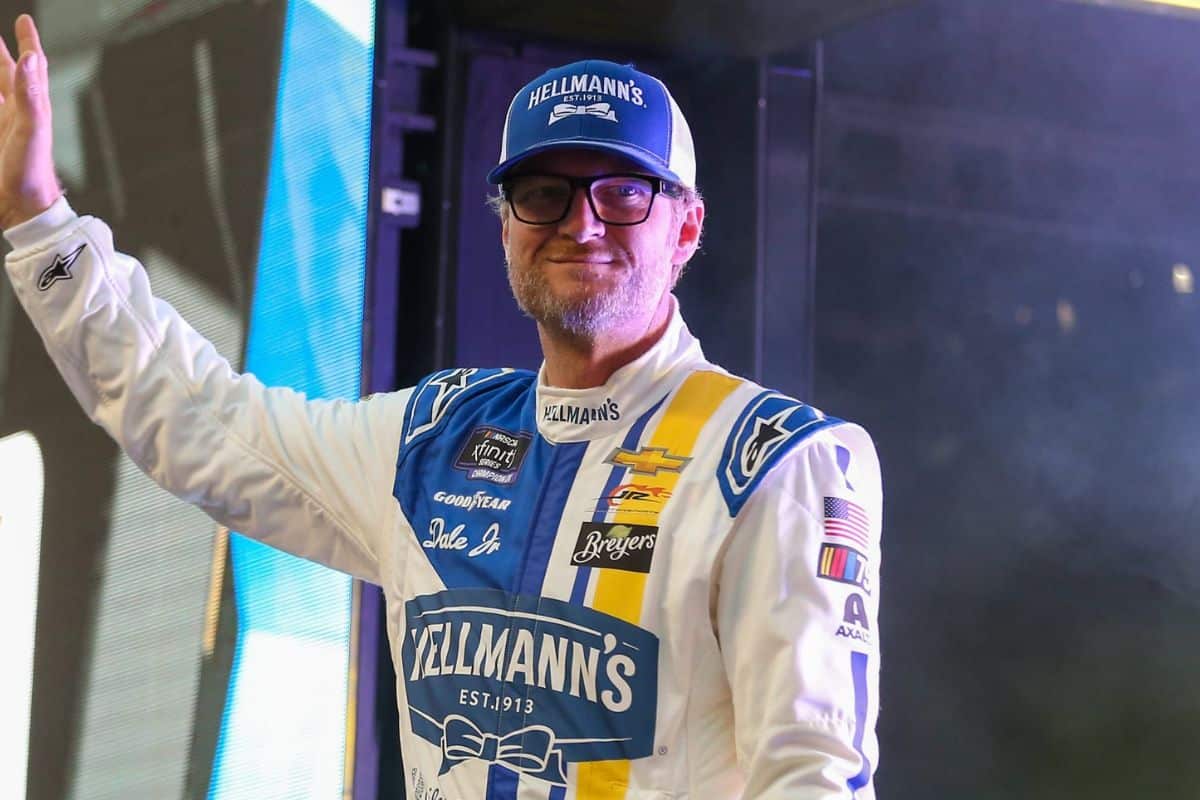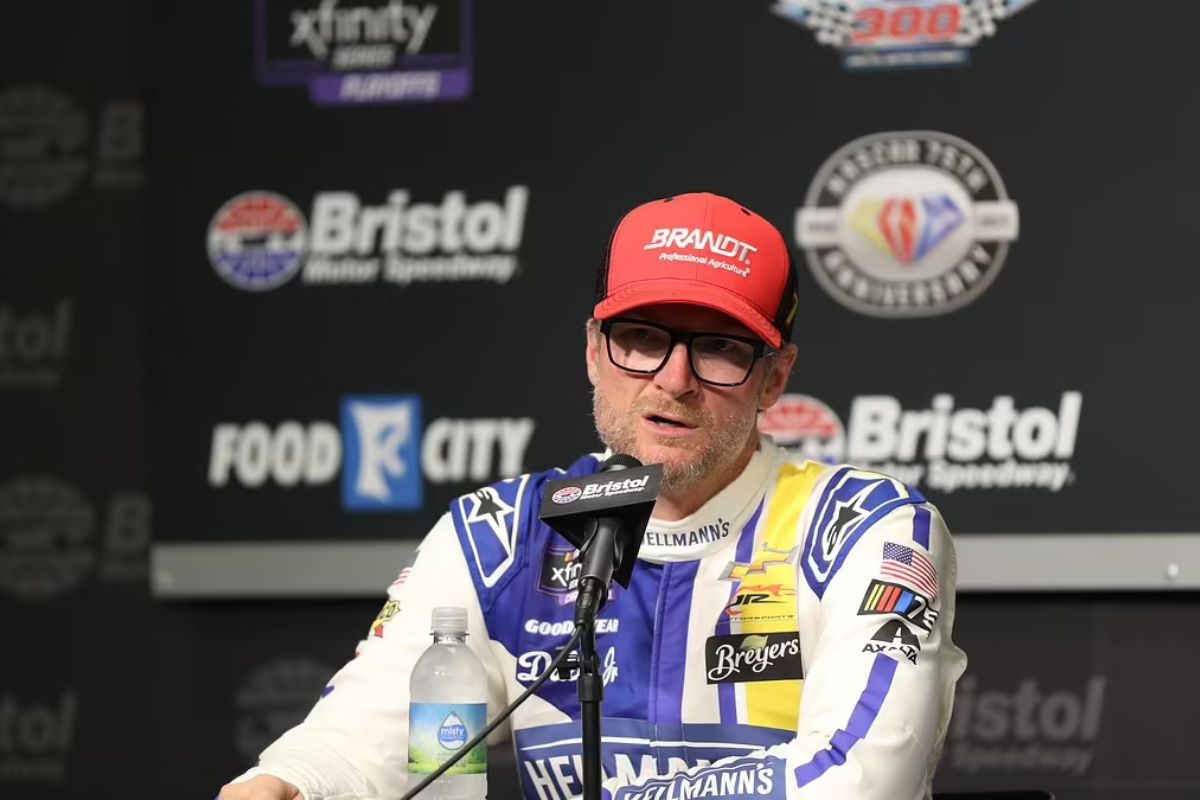Dale Earnhardt Jr. Slams NASCAR: The recent clash between Dale Earnhardt Jr. and NASCAR following the Craftsman Truck Series mishap has stirred controversy within the racing community. Earnhardt Jr.’s call to ‘black flag the car’ in response to the incident has sparked debates on the enforcement of rules and penalties in the sport.
As the aftermath unfolds, questions linger about the implications of such public criticisms on NASCAR’s reputation and the integrity of its competitions. The impact of Earnhardt Jr.’s outspoken stance and NASCAR’s handling of the situation raise significant concerns that demand closer examination.
The Unfortunate Incident:
The unexpected detachment of Bayley Currey’s Chevrolet roof during the NASCAR Craftsman Truck race at Atlanta Motor Speedway highlighted a critical safety concern within the sport. The incident not only raised questions about the effectiveness of the inspection process but also underscored the driver frustration and team responsibility in ensuring the safety of the vehicles on the track. Racing regulations are in place to prevent such mishaps, making this occurrence particularly alarming.
Safety concerns are paramount in motorsports, where high speeds and close competition amplify the risks involved. The detachment of a crucial component like the roof poses a significant threat to the driver’s well-being and the integrity of the race. While accidents are an inherent part of racing, preventable issues like this roof detachment shed light on the importance of thorough inspections and adherence to safety protocols.
Moving forward, both NASCAR officials and teams must address this incident proactively to prevent similar occurrences in the future. By prioritizing safety and reinforcing compliance with regulations, the sport can uphold its commitment to protecting its participants and maintaining the integrity of competition.
Dale Earnhardt Jr.’s Critique
Dale Earnhardt Jr.’s critique of NASCAR’s handling of the Craftsman Truck Series incident at Atlanta Motor Speedway underscores a pivotal moment where proactive intervention could have averted a potentially dangerous situation. Earnhardt Jr. highlighted a missed opportunity for NASCAR to step in and direct Currey to the pit lane once the issue with his vehicle’s structural integrity became apparent on the track.
By failing to act promptly, NASCAR allowed the situation to escalate, ultimately leading to the detachment of Currey’s roof. Currey’s explanation of the initial damage from debris, affecting the windshield brace, further emphasizes the importance of addressing such issues promptly in high-speed racing environments like Atlanta Motor Speedway.
Earnhardt Jr.’s stance on the necessity of immediate intervention aligns with the broader concern for driver safety and the structural integrity of racing vehicles, pointing towards a need for more proactive measures in ensuring on-track safety and preventing similar incidents in the future.
Fallout and NASCAR’s Response
Following the incident involving Currey’s roof malfunction and its impact on Ty Dillon’s race at Atlanta Motor Speedway, NASCAR’s response to the fallout has come under scrutiny for its handling of on-track safety protocols. The safety measures, track protocol, and vehicle inspections have been questioned in light of the roof flap coming loose and causing potential harm to Dillon’s truck. Driver awareness of such incidents is crucial, as Ty Dillon highlighted the shock of witnessing debris flying onto his vehicle during the race.
The repercussions of this event go beyond just Currey’s misfortune, raising concerns about the overall safety standards and response mechanisms in place during races. NASCAR’s actions post-incident, including the retrieval of the dislodged roof and discussions with Currey’s team, indicate a willingness to address the issue. Moving forward, a thorough review of safety protocols and increased vigilance during races is imperative to prevent similar incidents and ensure the well-being of all drivers on the track.
Did NASCAR Impose Penalties?
NASCAR’s decision not to impose penalties on Currey following the roof malfunction incident at Atlanta Motor Speedway has sparked debate within the racing community regarding the enforcement of safety regulations. The inspection outcome will shed light on whether the incident was a result of a mechanical failure or a maintenance oversight.
NASCAR’s choice to withhold penalties in Currey’s situation may be seen as a strategic move to gather more information before taking definitive action. By planning a thorough inspection of Currey’s truck at the team’s shop, NASCAR aims to ensure that all safety standards are met moving forward. This incident underscores the importance of preventive measures and proactive safety protocols in NASCAR races.
While some may question NASCAR’s decision not to penalize Currey immediately, this approach demonstrates a commitment to a comprehensive understanding of the situation before meting out consequences. The racing community awaits the results of the upcoming inspection to determine the appropriate course of action to uphold safety standards in the sport.
News in Brief
Dale Earnhardt Jr.’s recent criticism of NASCAR’s handling of the Craftsman Truck Series incident at Atlanta Motor Speedway has ignited controversy. The detachment of Bayley Currey’s roof raised safety concerns, prompting Earnhardt Jr. to call for immediate action. The incident highlights the importance of rigorous inspections and adherence to safety protocols in racing. Earnhardt Jr. contends that NASCAR missed an opportunity for proactive intervention. The fallout prompts questions about safety standards, track protocol, and NASCAR’s response mechanisms. Despite NASCAR’s decision not to impose immediate penalties on Currey, pending inspection results will determine the course of action. This incident underscores the need for preventive measures and a comprehensive understanding before enforcing consequences, emphasizing NASCAR’s commitment to safety standards.
Our Reader’s Queries
Q. Who was at fault for Dale Earnhardt crash?
A. Dale Earnhardt Jr. graciously absolved Marlin of any responsibility, urging those who cherished his father’s memory to refrain from assigning blame for the tragic incident. On February 20, Marlin publicly acknowledged his involvement, emphasizing that he had no intentional wrongdoing. He clarified that both drivers were passionately racing for victory on the last lap of the Daytona 500. This poignant moment highlights Earnhardt Jr.’s compassion and Marlin’s acknowledgment of the intense competition that unfolded during that fateful race.
Q. What was the biggest NASCAR crash in history?
A. In a pivotal moment during the 2002 Aaron’s 312 at Talladega, a defining incident unfolded on lap 14. This marked the largest crash in modern NASCAR history (1972–present) at the exit of turn two, ensnaring a staggering 31 cars. As the field descended down the back-straightaway, three drivers – Stacy Compton, Jason Keller, and Kenny Wallace – managed to navigate through the chaos after clearing pole-sitter Johnny Sauter. This dramatic event showcased the unpredictable nature of racing at Talladega, leaving a lasting impact on the dynamics of the 2002 Aaron’s 312.
Q. What car was Dale Earnhardt driving when he crashed?
A. Behind the wheel of his iconic black No. 3 Chevrolet, Earnhardt found himself in the thick of the competition, battling for the coveted third place. However, the intensity of the race took a turn when his car made contact with another, ultimately leading to a collision with the unforgiving track wall. This pivotal moment underscored the unpredictable and high-stakes nature of NASCAR racing, as even a seasoned driver like Earnhardt faced the challenges that came with the pursuit of victory.
ALSO READ: Dale Earnhardt Jr. Exposes NASCAR Teams’ Bluff on Charter Negotiations!


